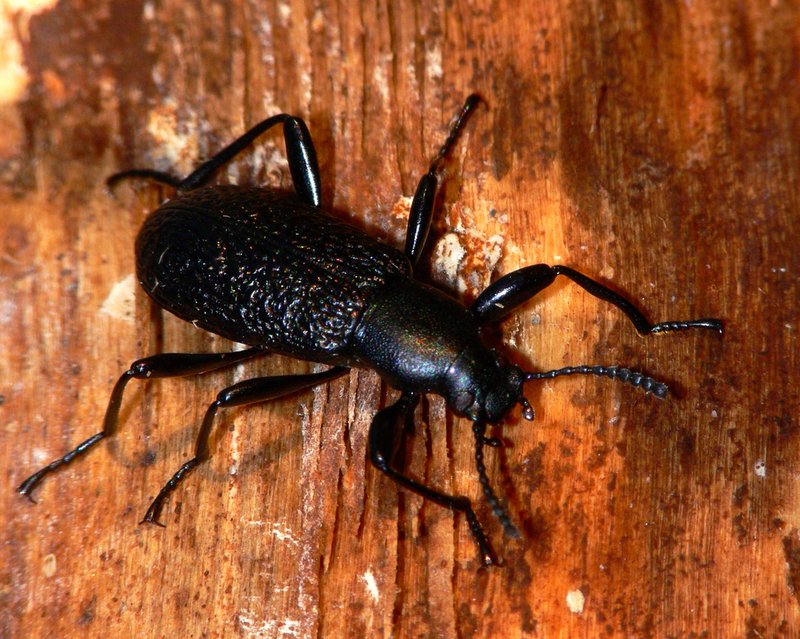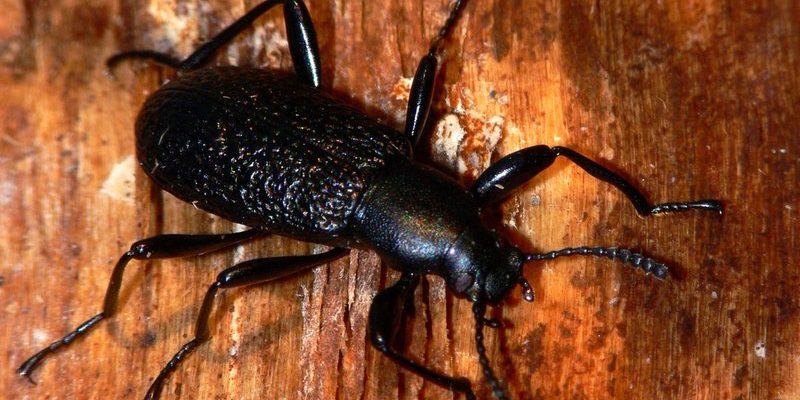
When you think of insects, you might picture butterflies fluttering or ants marching in a line. But there’s a lesser-known group that deserves our attention: the Darkling Beetle. These resilient beetles are not just ordinary bugs; they boast remarkable adaptations that enable them to thrive in various environments. Imagine a tiny superhero, equipped with a hard shell and a knack for surviving in some of the harshest conditions on Earth. That’s the Darkling Beetle for you!
You might be wondering where you’ll find these intriguing creatures. Darkling Beetles inhabit a range of environments, from deserts to forests, showcasing their versatility. They play a crucial role in their ecosystems, breaking down decaying organic matter and contributing to nutrient cycling. So, let’s dive deeper into the world of Darkling Beetles and uncover what makes them so unique.
What Are Darkling Beetles?
The Darkling Beetle is part of the Tenebrionidae family, encompassing about 20,000 species worldwide. They come in various sizes and shapes but typically have a robust, elongated body that can be black or brown. One standout feature is their hard exoskeleton, which protects them from predators and harsh environmental conditions. This tough exterior helps the beetles retain moisture, an essential trait, especially for those living in arid areas.
If you’ve ever spotted a Darkling Beetle, you might have noticed its somewhat clumsy movement. They tend to scurry around rather than fly. This is because many species have reduced wings, making them more suited to thriving on the ground. Picture them as tiny tanks rolling over the forest floor or sandy dunes!
Habitat and Distribution
Darkling Beetles are incredibly adaptable and can be found on every continent except Antarctica. They thrive in a variety of habitats, including deserts, grasslands, forests, and even caves. The flexibility in their habitat choice is partly due to their remarkable ability to withstand extreme temperatures. This resilience gives them an edge for survival in environments that many other insects would struggle to endure.
In deserts, for instance, Darkling Beetles have adapted to lose minimal moisture. They often venture out at cooler times of the day, such as early morning or late afternoon, to avoid the scorching sun. Forest-dwelling species, on the other hand, thrive in the leaf litter, where they find ample organic matter to feast upon. This adaptability makes them a fascinating subject for researchers studying how insects respond to environmental changes.
Physical Characteristics
Darkling Beetles exhibit a range of physical traits that enhance their survival. They generally have a hard, shiny exoskeleton, which serves as both armor and a barrier to moisture loss. Most species are between 1 and 4 centimeters long, but some can be larger. Despite their small size, they are surprisingly tough and can withstand harsh conditions that would be fatal to many other insects.
Another interesting aspect is their coloration. While many are dark brown or black, some exhibit lighter hues or even brilliant colors. This variation can serve different purposes: darker colors help absorb heat in cooler climates, while lighter colors can reflect sunlight, reducing the risk of overheating. Their ability to blend into their surroundings also provides effective camouflage against predators.
Life Cycle and Reproduction
The life cycle of a Darkling Beetle begins with the female laying eggs in moist soil or decaying plant matter. After a few days, the eggs hatch into larvae, commonly referred to as grub. These larvae are often dark and worm-like, spending their early lives feasting on organic material. It’s during this stage that they grow rapidly, shedding their skins multiple times before reaching maturity.
Once they’ve fully grown, they enter the pupal stage. This phase is fascinating, as they undergo metamorphosis, transforming into adults. Depending on the species and environmental conditions, this entire life cycle can take a few months to a year. Once they emerge as adult beetles, the cycle starts anew! Their reproductive strategies help ensure that even in tough conditions, they can continue to thrive.
Diet and Feeding Habits
Darkling Beetles are omnivorous scavengers, primarily feeding on decaying organic matter. This includes dead plants, rotting wood, and other decomposing materials. Their role in the ecosystem is vital, as they help break down waste and recycle nutrients back into the soil. This process fosters healthier ecosystems and supports plant growth.
Some species have more specialized diets, feeding on certain fungi or specific types of plant material. Their strong mandibles allow them to chew through tough materials, making them efficient recyclers in their habitats. If you think of the ecosystem as a giant puzzle, Darkling Beetles are critical pieces, helping maintain balance by cleaning up debris and enriching the soil.
Behavior and Defense Mechanisms
Darkling Beetles exhibit interesting behaviors that enhance their chances of survival. Their primary defense mechanism is their hard exoskeleton, which deters many would-be predators. Additionally, some species can release a foul-smelling liquid from their bodies, which helps repel predators further. Imagine facing an unpleasant odor that makes you think twice about taking a bite!
Moreover, when threatened, these beetles often play dead. This tactic can confuse predators, making them less likely to consume the beetle. Their ability to remain perfectly still also makes them blend into their surroundings, providing an extra layer of camouflage. These clever strategies help ensure that Darkling Beetles can continue to thrive in their natural habitats.
Interesting Facts About Darkling Beetles
| Size: | 1 to 4 cm long |
| Habitat: | Deserts, forests, grasslands, caves |
| Diet: | Decaying organic matter, fungi |
| Life Span: | Several months to a year |
| Defense Mechanisms: | Hard exoskeleton, foul-smelling liquid, playing dead |
Conservation Status
While many Darkling Beetle species are widespread and abundant, some face threats due to habitat destruction and climate change. Habitat loss can occur from urban development, agricultural expansion, and pollution, pushing these beetles into smaller areas. Because they play such an important role in their ecosystems, conservation efforts are crucial to ensure their survival and the overall health of their environments.
Scientists and conservationists are working to monitor populations and understand their needs better. Preserving the habitats where these beetles thrive is essential, not just for their sake but for all the species that rely on a healthy ecosystem. It’s a reminder that even the smallest creatures have a big impact on our world!
How to Observe Darkling Beetles
If you’re interested in observing Darkling Beetles, here’s a simple approach. Start by visiting local parks or natural areas where they are known to inhabit. Look under rocks, logs, and in leaf litter—these are common hiding spots. Be patient, as you might have to wait quietly to spot these little critters.
Using a magnifying glass can enhance your viewing experience, allowing you to appreciate their unique physical features up close. Observing their movements and behaviors can be incredibly rewarding. Just remember to respect their habitat and minimize disturbance to ensure they remain safe and continue their essential roles in the ecosystem.
Darkling Beetles might not be the most glamorous insects, but they are truly remarkable creatures. Their adaptability, unique life cycles, and essential roles in their ecosystems make them worth learning about. Next time you’re out in nature, take a moment to appreciate these tiny beetles scurrying across the ground. They’re doing important work, often unnoticed but always significant.
FAQ
Are Darkling Beetles harmful to humans?
No, Darkling Beetles are generally harmless to humans. They do not bite or sting, and they aren’t known to carry diseases. In fact, they play a crucial role in breaking down organic matter, which benefits the environment. If you spot one in your garden, you can consider it a helpful ally!
Can Darkling Beetles fly?
Some species of Darkling Beetles do have wings, but many have reduced or non-functional wings, which means they’re not great flyers. Instead, they prefer to stay close to the ground, where they feel safe and can effectively search for food.
What do Darkling Beetles eat?
Darkling Beetles are primarily scavengers, feeding on decaying organic matter, such as leaves, dead plants, and fungi. Their diet helps recycle nutrients back into the soil, making them essential for a healthy ecosystem.
How do Darkling Beetles reproduce?
Female Darkling Beetles lay eggs in moist soil or decaying material, where they hatch into larvae. After several molts, the larvae enter a pupal stage and eventually emerge as adult beetles, continuing the life cycle.
What environments do Darkling Beetles prefer?
Darkling Beetles can be found in a wide range of habitats, including deserts, forests, and grasslands. Their adaptability allows them to thrive in various conditions, making them a common sight worldwide.
Are Darkling Beetles social insects?
No, Darkling Beetles are not social insects. They tend to be solitary, only coming together during the mating season. They don’t live in colonies like some other insects, such as ants or bees.
How long do Darkling Beetles live?
The lifespan of Darkling Beetles can vary, but they typically live for several months to a year, depending on the species and environmental conditions. Factors like food availability and habitat can significantly influence their lifespan.
Can Darkling Beetles be kept as pets?
Yes, some species of Darkling Beetles can be kept as pets. They are relatively low-maintenance and can be fascinating to observe. However, if you decide to keep them, make sure to research their specific care requirements to ensure they thrive.
What are some predators of Darkling Beetles?
Darkling Beetles face predators like birds, small mammals, and some reptiles. Their hard exoskeleton and defensive behaviors, like playing dead, help them evade these predators and enhance their chances of survival.

